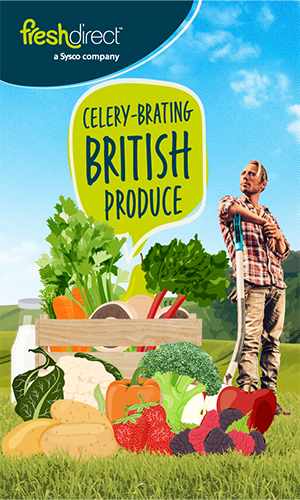New European regulations to reduce levels of acrylamide in food came into force last month. However, guidance for member states still hasn’t been finalised, which has left caterers confused about their responsibilities in relation to sampling and the foods covered. Dr Lisa Ackerley, food safety expert at UKHospitality, says businesses need to focus their efforts on reducing acrylamide rather than getting tangled up in unnecessary sampling.
FoodserviceFootprint (FF): UKHospitality has published “interim guidance” on acrylamide for industry. Why?
Dr Lisa Ackerley (LA): The new regulations have been in force since April 11th, but the EU has yet to finalise its guidance. This has made it difficult to publish the UKH Guide, which may be still subject to change. However, we felt it was important to get some guidance out straight away as we have been working on this for some time, and members were concerned about what the regulations mean and how they apply to them.
FF: What areas of concern have your members had?
LA: A last-minute possible extension of scope in the EU Guidance – in other words, what foods are covered by the regulation – has caused some concern. At one point it looked as though this was being extended and we have fed back through the Food Standards Agency and our EU Trade Association (HOTREC) to express concerns about this. Since then we are pleased that the scope has been adjusted so that it reflects the legislation.
Another area that is worrying many businesses is whether they fall into the category in the regulation that requires them to carry out some more onerous tasks other than simply mitigating (reducing) acrylamide presence in food. This could include sampling, and at a cost of around £300 per sample, clearly this could be a big burden on businesses. Whilst these larger businesses can reduce the burden somewhat by taking representative samples, we would rather businesses spent their money on mitigation and control of the risks rather than sampling.
FF: Could this be a particular headache for caterers with a number of different sites?
LA: It’s still not clear how businesses would determine the category they fit into, which is the main cause of delay now in publication of the final version of the UKH Guide. We believe very strongly that where large businesses have many outlets operating in different ways, with different menus, suppliers and standard operating procedures, that they should not fall into the more onerous category of the regulations. Businesses should discuss this with their primary authority if they have one, and take advice from them.
FF: How might the current reading of the guidance by FSA impact smaller suppliers?
LA: One area that’s been very useful in terms of clarification is that businesses can ask their suppliers for information about sampling if this has been done to produce manufacturer’s instructions and/or colour charts to help calibrate the finished product against the benchmark levels in the regulations. This substantially reduces the burden of sampling.
However, we have heard from members of large businesses with many suppliers that this still creates a problem. I am concerned that smaller suppliers may not be able to do this, meaning that they could lose business. In addition, businesses falling into the more onerous category may decide to no longer produce home-cooked chips and bread because this would mean they would have to carry out samples. This would be a great shame.
FF: Is there anything else in these new regulations that is concerning you?
LA: When there is anything new, everyone is anxious about how it will work. Our guide has been produced to make it easier for businesses to understand the simple steps they need to take. I think we need to focus on these rather than get tangled up in sampling, which is only to benchmark figures anyway. The real improvements will be very simple – cooking to a golden yellow colour and not over-cooking starchy foods. As this regulation is enforced under the hazard analysis and critical control point regulation (EU 852/2004 Article 5), then the mitigation of acrylamide is what we should be trying to achieve rather than worrying about businesses sampling their home-made chips and bread.












